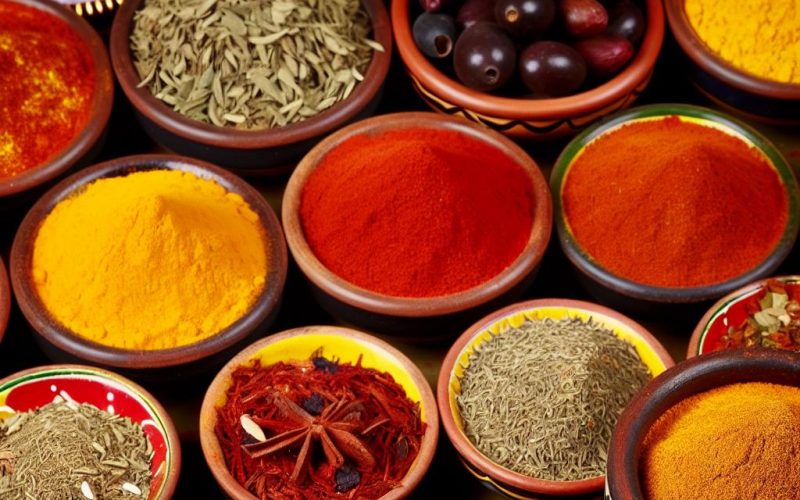Exploring the Unique Spices and Flavors of the Region
The exploration of spices and flavors across different regions of the world unfolds a kaleidoscope of tastes and aromas that characterize the essence of global cuisines. By understanding these distinct flavors, not only does one enhance their culinary experiences, but they also gain deeper insights into the cultural identities and traditions that have developed around these culinary practices over centuries.
North Africa
North Africa stands out for its vibrant and diverse use of spices, with each blend telling its own story. A quintessential element in the spice repertoire of this region is ras el hanout. The translation of this term, “head of the shop,” alludes to it being the pinnacle of spices a vendor can offer. The composition of ras el hanout is a testament to the creativity and expertise of the individual vendor—it is a proprietary blend that can include a variety of ingredients such as cinnamon, turmeric, coriander, and cardamom. This orchestration of spices is integral to the creation of iconic North African dishes like tagines and couscous, bestowing upon them a richness and complexity of flavor that is difficult to replicate elsewhere.
The Middle East
The Middle East introduces distinct and bold flavors with spices that have been a part of the cultural fabric for centuries. Sumac is one such prominent spice, derived from the dried and ground berries of the sumac bush. The result is a spice with a tangy, lemony essence that is versatile enough to feature in a vast array of dishes. Beyond its functional use, it adds a vibrant touch to salads, meats, and even the creamy textures of hummus. Then, there is Za’atar, a blend combining the zesty sumac with earthy thyme, fragrant oregano, and nutty sesame seeds. It’s sprinkled over breads, infusing each bite with robust layers of flavor. In the realms of flatbreads and baked goods, za’atar acts as an aromatic seasoning that elevates simple dishes to extraordinary levels.
India
Venturing into the culinary world of India, one encounters a rich tapestry of spices that form the backbone of the cuisine, with each region boasting its blend of flavors. Amongst these, two spices offer particularly distinctive tastes. Ajwain is one such spice, appreciated for its thyme-like aroma and flavor. It finds its way into various Indian flatbreads, like parathas, and is commonly added to curries, imparting an anisic undertone that complements other spices beautifully. A stark contrast to ajwain is the pungent asafoetida, commonly known as Hing. Despite its strong and often divisive aroma, once cooked, it reveals a surprisingly smooth onion-garlic flavor. It’s indispensable in many vegetarian dishes, especially in lentil-based delicacies such as dal, where its savory depth rounds out the dish.
Latin America
Latin American cuisine offers a mosaic of flavors. It’s here where spices and herbs like epazote illustrate the region’s unique culinary identity. Often used in Mexican cuisine, epazote is noted for its distinctive and pungent flavor, playing a key role in bean dishes where it not only adds flavor but is also believed to aid digestion. Achiote, another noteworthy ingredient, is sourced from the seeds of the annatto tree. Its slightly peppery flavor, accompanied by its vibrant color, often transforms the simplest of dishes. A traditional example is cochinita pibil, a slow-roasted pork dish from the Yucatan Peninsula, where achiote’s vivid orange hue and subtle spicy notes are indispensable to its preparation, making it a cornerstone of this culinary tradition.
For those keen on deepening their understanding of these spices and their extraordinary origins while discovering new ways they can revitalize daily meals, more information can be explored at Explore more about spices and their origins here.
This global journey through spices underscores not just the diverseness of flavors that regions contribute to the world, but also reflects the historical and cultural narratives that are preserved within these culinary practices. Through understanding and utilizing these spices, each dish can unfold a story of its past while delivering memorable culinary experiences.
